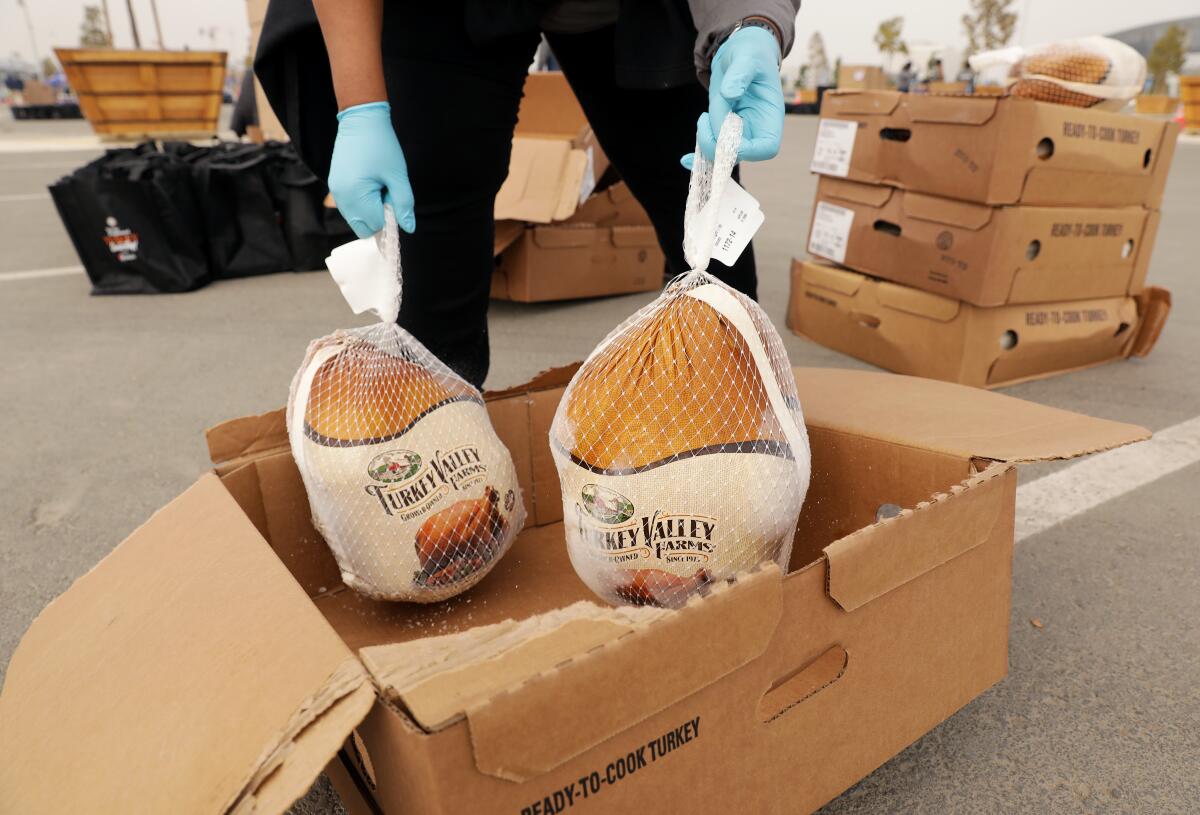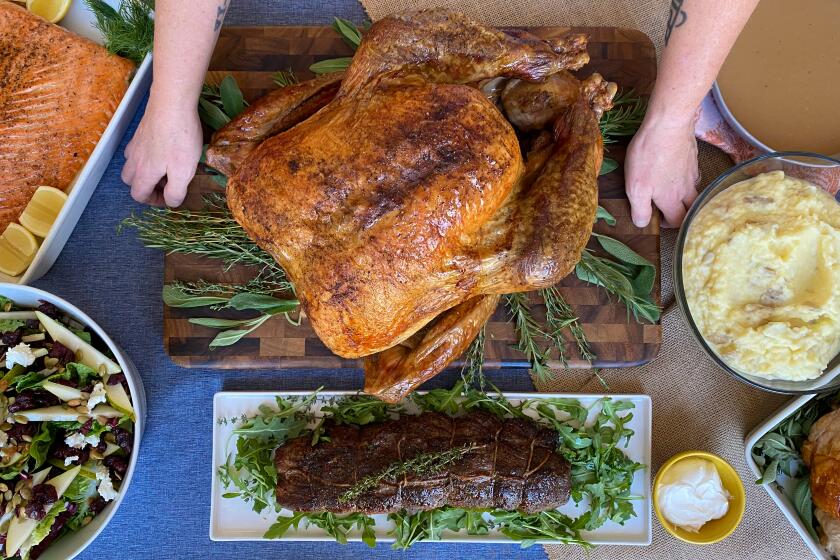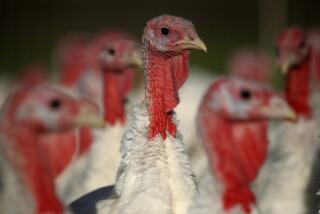Opinion: Don’t be a turkey (hoarder) this Thanksgiving. A run on birds hurts everyone

- Share via
My friend — I’ll call her Nellie, as in Nervous — wants her usual pasture-raised, organic turkey, on the small side, for Thanksgiving. But her usual supplier has told her it’s not clear that will be possible. Small turkeys of all kinds could be in short supply this year.
So Nellie bought a large frozen turkey from a local supermarket, the loss-leader version that sells for a half dollar per pound or so, and tossed it into the freezer just in case her trendier bird doesn’t arrive in time. But now she has two worries: Maybe she won’t get the turkey she wants — and maybe she will, in which case what’s she to do with that gargantuan bird in the freezer?
There’s been a lot of talk this year about a shortage of Thanksgiving turkeys and cranberries. And it’s true that the now-familiar problems — labor shortages, an uncertain market and supply chain issues — have led to somewhat lower supply, according to the U.S. Department of Agriculture. Demand is up this year from last, especially for smaller birds. People aren’t traveling as much, thanks to ongoing concerns about COVID-19, so big birds for a huge crowd around the table are less appealing.
Here’s where to find the best Thanksgiving dinners to go in Los Angeles.
Still, this supposed dearth of turkeys smacks of the frenzy that led to the Great Toilet Paper Shortage of 2020. And if it goes down the same route, you can thank turkey hoarders like Nellie, desperate to ensure their supply even at the expense of others. They’re already buying up stock for Christmas. You would think after the TP debacle, we’d have learned better, especially at a time of year that is supposed to be about gratitude and sharing.
It doesn’t help that the reports coming out are confusing and contradictory. There’s a shortage, some say. There isn’t a shortage, others say, though the birds will be more expensive and somewhat harder to find — so, they advise, get your turkey early to avoid the rush. Some suppliers say people were ordering back in September to make sure they got out ahead of the crowd.
We all could do that, empty the shelves immediately to ensure we’re not the ones left deprived. Or we graciously could leave plenty for others and remember that it’s generally thought the Pilgrims weren’t eating turkey at the first Thanksgiving anyhow. It is more likely that the men hunting “wildfowl” were bringing home water birds such as ducks and geese. Venison was a big part of the first feast, brought by the Wampanoag tribe. So were fish and eels, and probably mussels, which were easy to collect along the shore. None of these are exactly cheap, but they’re authentic.
You know what also was believed to be a big part of the original meal that’s actually less expensive and more abundant than turkey? Vegetables. Not potatoes, or sweet potatoes either. Those weren’t available at the time. But onions, carrots, squash, cabbage, lettuce, spinach, chard and turnips likely made an appearance. Are you excited yet? There was no bread for stuffing; wheat wasn’t around, either. Nor the sugar or maple syrup to make cranberry sauce. There was plenty of fruit, though.
The 2021 holidays will be much different from 2020 thanks to the COVID-19 vaccines. But we aren’t quite back to normal. Here’s what you should know.
In other words, unlike our meals of bread stuffing, heavily sugared berries, a single animal protein, marshmallow-topped sweet potatoes and heavy desserts, the first feasters were eating a healthful and varied meal that included both cruciferous and leafy green vegetables. Though they did a fair amount of meal planning for the first Thanksgiving, they ate what was available and didn’t rush out to grab the last eels before some other Pilgrim could get there. So let’s not do that, either.
And just in case you want to get really authentic — or if there’s another run on toilet paper — it might help in a pinch to know that Colonial Americans generally used corn cobs after a visit to the outhouse.
More to Read
A cure for the common opinion
Get thought-provoking perspectives with our weekly newsletter.
You may occasionally receive promotional content from the Los Angeles Times.












